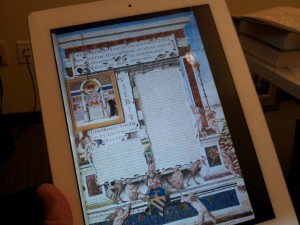 I just thought I’d footnote my three most recent added authors to PRDL: Aelius Donatus (fl. 4th c. AD), Dionysius Cato (fl. 4th c. AD), and Alexandre de Villedieu (c. 1170-1250, and who deserves to be present if only for his somewhat Augustinian place of primary residence).
I just thought I’d footnote my three most recent added authors to PRDL: Aelius Donatus (fl. 4th c. AD), Dionysius Cato (fl. 4th c. AD), and Alexandre de Villedieu (c. 1170-1250, and who deserves to be present if only for his somewhat Augustinian place of primary residence).
I have been fiddling with early Calvin, and these are the texts noted by Thurot as typically being used in the University of Paris in the late Middle Ages in the first two grades of preparatory grammatical study.
According to Thurot, Donatus and Cato were the first grade level of the preparatory study, Alexandre the second, and Peter of Spain’s Summulae logicales (which we already have in PRDL) was the third of the three degrees or levels. And, by the way, Charles Thurot, De l’organisation de l’enseignement dans l’Université de Paris au Moyen-Âge (Paris: Dezorby, 1850) is available from Google Books. There is, of course, more recent scholarship but Thurot is still worth consulting.
By all accounts, the 12-13 year-olds who got through this course without particular mental damage were quite proficient, albeit not singing, “Peter of Spain, I adore you.”
Now you can prep your Latin using the texts that Calvin probably used. Check out the annotated Alexandre and ask whether any of us could pass the course!



